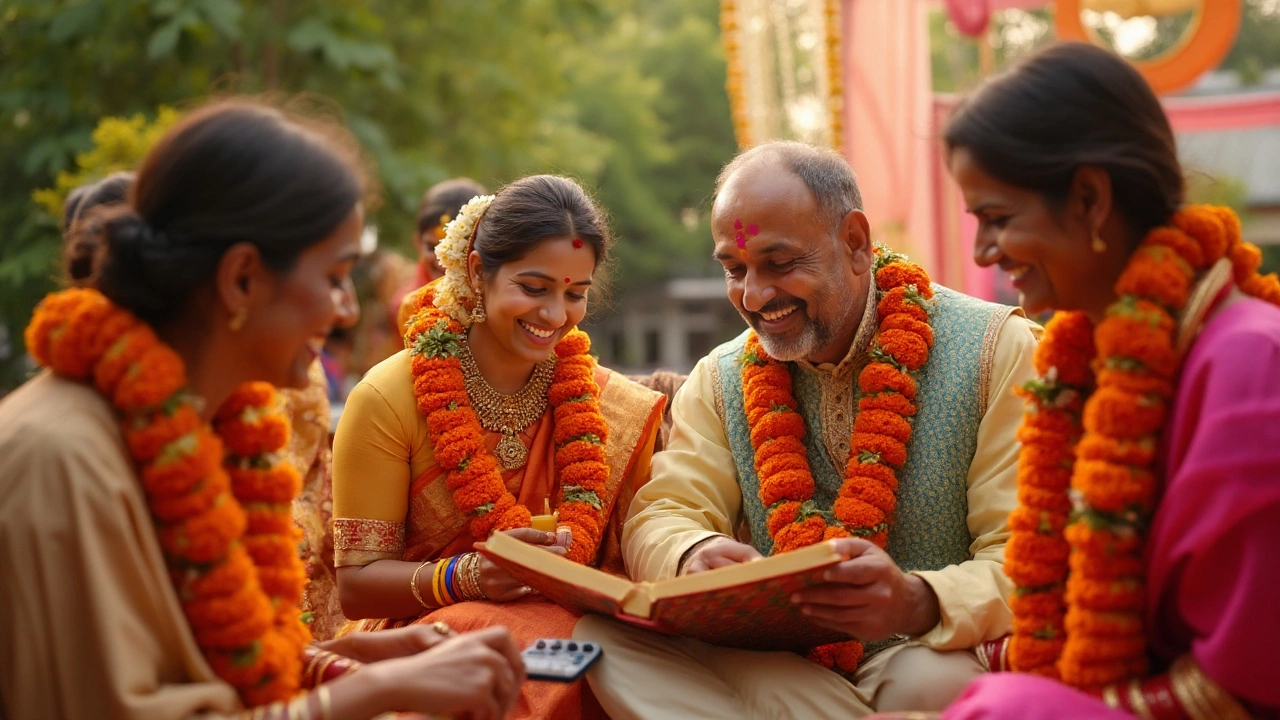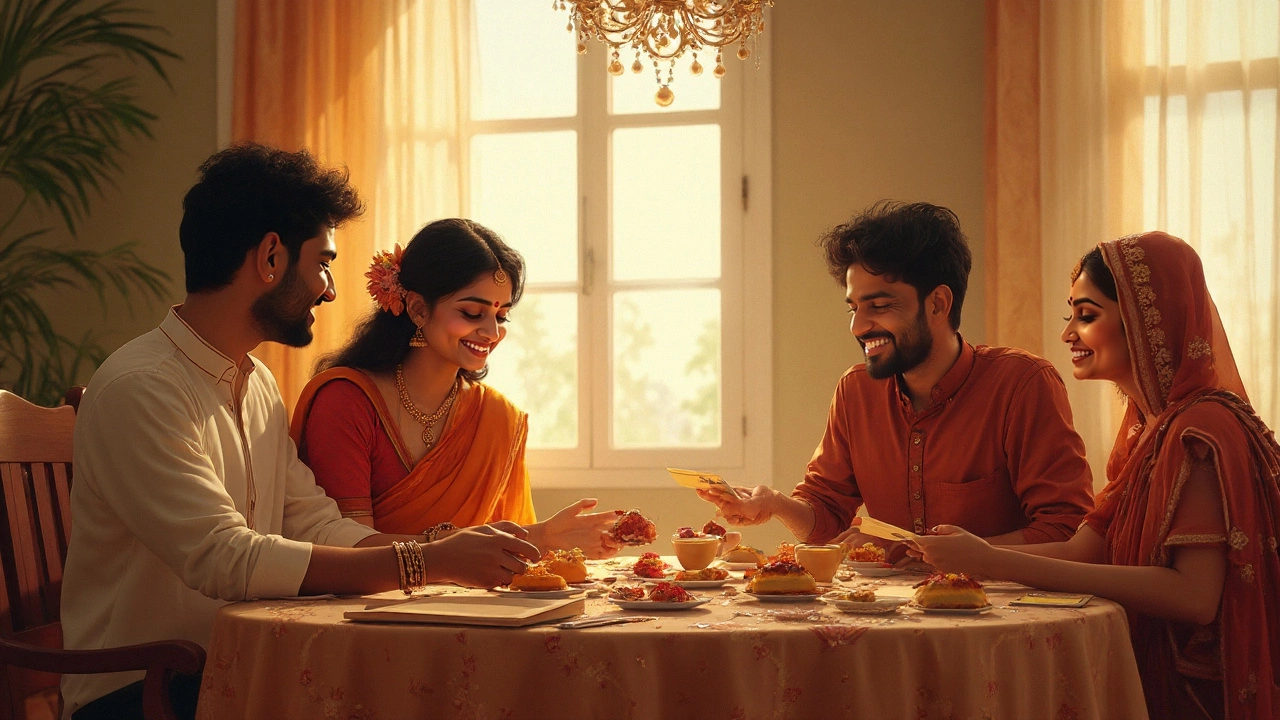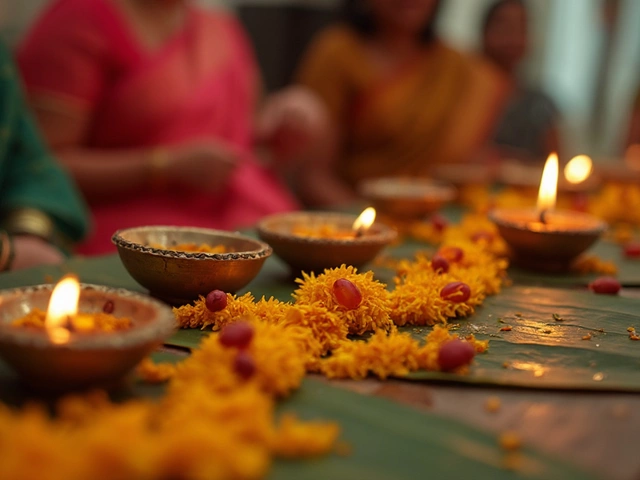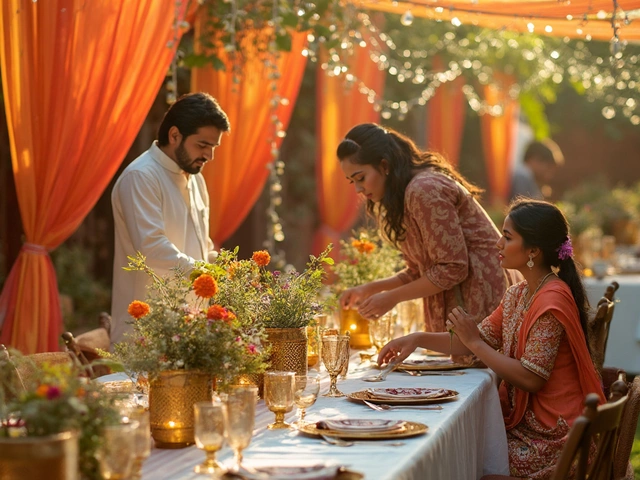
Planning a wedding can feel like juggling flaming torches while riding a unicycle—terrifying, expensive, and full of surprises. The first hard conversation usually isn’t about flowers or the table settings. It’s about money. Who’s actually paying for this magical, shockingly costly day? After all, a wedding isn’t something you can swipe on your debit card without batting an eye (unless you’re part of a certain royal family, and if you are, congrats, I guess). Let’s get honest about who covers the bill for a wedding in the UK today, which traditions still stick, and how couples are managing to keep things fair, sane, and kind-of affordable.
The Roots of Wedding Expense Traditions
The classic story almost everyone’s heard is the bride’s family pays for everything, while the groom’s family gets away with the rehearsal dinner. This bit of etiquette comes straight from early Victorian England, where daughters were thought of—let’s be blunt—as financial liabilities. Back then, marrying off a daughter meant the family paid to "pass the torch," from walking her down the aisle to footing the bill for her dress, food, and guests. The bride’s father hosting the whole affair also signaled the family’s social standing.
Here’s the thing: in 2025, most of those rules have melted away, especially in the UK. Couples get engaged later, are financially independent, and both sets of parents work full-time. Many weddings don’t even involve just two families—sometimes two cultures, or two grooms, or two brides. You’d be amazed how far we’ve come. But certain traditions do still echo today, and they pop up in just about every guidebook you pick up. They look something like this:
- Bride’s family: Venue, ceremony, dress, bridal flowers, photos, and all those paper invites, plus the cake.
- Groom’s family: Rehearsal dinner, sometimes the bar at the wedding, and occasionally transportation.
- Groom: Engagement ring and honeymoon. (Only the two most expensive things, no sweat!)
- Bride: Wedding gifts for her bridesmaids.
Yet here’s a plot twist. A 2024 survey from Bridebook UK showed that 70% of couples chip in significantly or even pay for the majority of their own wedding. Only 16% of weddings in England last year were entirely funded by one set of parents. The rest? A mishmash—sometimes the families split it 50-50, sometimes contributions are based on what specific extras relatives want to cover. Flexibility rules the day now.
The Modern UK Wedding: Reality Check on Budgets
The average UK wedding cost £23,885 in the past year according to data from Hitched.co.uk. That sounds high, but keep in mind it includes everything from posh country house venues to barn parties with pizza vans. Where, exactly, do those pounds go? If you squint closely at wedding budgets, it’s pretty easy to see how the numbers add up:
| Expense | Average Cost (£ GBP) |
|---|---|
| Venue & Catering | 10,590 |
| Attire | 1,300 |
| Photography & Video | 1,800 |
| Flowers & Decorations | 1,390 |
| Rings | 1,100 |
| Entertainment | 1,000 |
| Stationery | 400 |
| Transport | 400 |
| Miscellaneous | 1,905 |
By the way, most couples end up spending more than they planned—yes, even if you try to rein yourself in. It’s easy to say you won’t get custom napkins but suddenly you’re six emails deep with an Etsy seller named Barbara. But the big costs—venue, food and drink, photos—are the main culprits.
Now, because the bill is so steep, more than half of couples now split expenses based on who can afford what, or they divide up by category: one side takes on the venue, the other the dress and flowers. Others take the modern route: open a shared wedding bank account and set up standing orders, so both can deposit funds every month, like an ultra-romantic joint savings plan. Parents typically get involved only if they’re willing—and able—to help, and those offers often come with strings (“Your nan has to invite 23 friends from the bowling club.”)

Splitting Costs: What Actually Works?
No universal solution fits every wedding. Still, a few common strategies have popped up across the UK and elsewhere. Here’s how real couples are negotiating the finance dance:
- Percentage Splits: Couples decide, for example, that the two families will each cover 40%, while the couple chips in the remaining 20%. If one family can’t contribute, the couple might just pay more themselves.
- Divide by Choices: Whoever cares about a given part the most, pays for it. If your mum wants the ice sculpture, she covers it. If the couple is obsessed with live music, that’s on them. It keeps the control with the person footing the bill.
- Flat Cash Gifts: Sometimes families just say “Here’s our contribution—spend it however you want.” That gives freedom and saves arguments about decisions like the cursed seating chart.
- Savings Together: Many start a shared account as soon as they’re engaged, contributing monthly based on what they can afford. It’s practical, transparent, and avoids surprises, which is great if you hate awkward talks.
- Specific Roles: Some stick to tradition, letting the bride’s parents cover the venue and the groom’s pay for the rehearsal. In multicultural weddings, sometimes different traditions blend and each family takes care of their own ceremonies.
There’s no shame in doing what works for you. Plenty of couples even crowdsource part of their wedding via honeymoon funds or cash gifts instead of a registry. One thing to remember is that money and expectations are tightly tied. If someone pays, they’ll probably expect a say—whether that’s your mum vetoing the food truck or your aunt deciding who gets an invite. Being upfront is a lifesaver: have the hard chats, maybe even jot down an informal “wedding contract” so everyone knows the boundaries—money and decision-making included.
Cultural Differences: Weddings Around the Globe
Look outside the UK, and “who pays?” gets wildly complicated. In many Indian and Pakistani families, the bride’s family still handles the main celebrations, but the groom’s side contributes significant gifts or hosts an event or two. In China, the groom’s family covers most expenses—sometimes even paying a “bride price” to the bride’s parents, a tradition with deep roots in family honour and symbolism.
American couples often see parents on both sides splitting the bill or dividing big-ticket items. In some religious ceremonies, the community as a whole chips in—you’ll see GoFundMe pages or community halls being thrown open for celebrations. Jewish weddings, for example, once placed most costs on the bride’s family, but today, more often both sides pitch in equally.
If your families are from different cultures, it gets even trickier. The most successful multicultural or international weddings happen when couples carve out time to educate both sides about what matters—whether it’s a tea ceremony, a henna night, or just making sure the buffet caters to veggie aunties from both ends of the family.
- Want to sidestep arguments? Make a chart of traditions and expected costs, then have an honest sit-down with everyone who might want a say.
- Keep an open mind. Currency, family size, and local customs can mean expectations are very different—what feels “fair” for one family might be totally bizarre for another.
And sometimes, families with big cultural differences set up two or more smaller celebrations, each paid for by that side of the family. If everyone agrees, it can be the least stressful option of all. As long as people feel respected and heard, most families just want to see everyone happy (and let’s be honest, share some Instagrammable cake).

Tackling Awkward Money Talks: Tips That Work
If you’ve ever silently counted to ten in a Tesco car park while your parents argued about sausage rolls, you know money talks can get heated, fast. But budget collisions are almost inevitable when you blend families, visions, and bank accounts. The trick is, don’t drag it out. Here are some steps to keep things smooth, honest, and as close to stress-free as possible:
- Talk Early and Be Specific: Don’t tiptoe around the money chat—do it before you even start shopping for wedding venues. Bring everyone who’ll have a wallet involved, and lay out who’s able (and willing) to pay for what.
- Write Down a Realistic Budget: Research realistic prices for venues, photographers, dresses, and so on. Ask friends who’ve just gotten married what things cost. Make a spreadsheet or find a budget app—Google Sheets works a treat.
- Accept and Adapt to Limits: If someone only wants to spend on a specific part—like Grandma’s obsessed with table linen, or Dad refuses to pay for a band—let them, and don’t argue. It’s their choice, their money.
- Communicate Everything: Use WhatsApp groups, email, whatever works. Keep everyone updated any time there’s a change in cost or plan.
- Respect Each Other’s Boundaries: So someone doesn’t want to spend more than £500 on cake. That’s fine. Work with what you have, and say thanks—not “How could you?!”
- Plan for Surprises: Set aside 10% of the total budget for emergencies or last-minute add-ons. Whisper it into the universe: something will always pop up.
- Keep the Day Yours: Don’t lose sight of what you want just to please others. It’s your wedding, not a family reunion or a showcase of Auntie Jan’s cake pops.
By the way, the most important thing—and I say this as someone who’s watched too many friends cry over budgets—is the wedding isn’t about who pays, who has the fanciest tablecloths, or how big the cake is. It’s about making memories you’ll want to remember, not resent. And if all else fails, you can elope quietly, with just a witness, your love, and maybe a cat or two (Whiskers strongly approves this option).



Comments
Post Comment